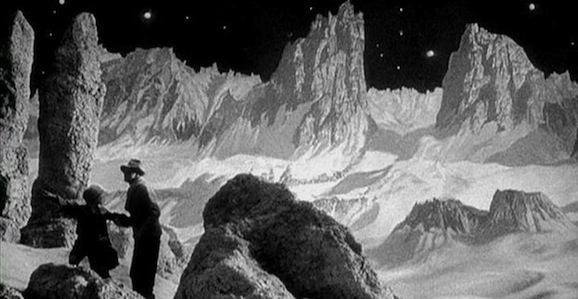5 Black And White Movies To Watch After Interstellar
This article is more than 2 years old
 Woman in the Moon
Woman in the Moon
Woman in the Moon marks the second Fritz Lang entry in our truncated list, and this 1929 silent film, maybe even more than A Trip to the Moon, is the first depiction of space travel on screen, at least as it appears today. Revolving around a professor who believes that there are stores of gold to be mined on the lunar surface, this is one of the earliest, if not the first, movies to introduce the idea that there are worlds out there with things we, as a species, can use. Here the idea is that there are ways to profit—which is similar to the idea of asteroid mining—but what’s more useful than a new planet to call home like the crew from Interstellar are looking for? They’re different parts of the same equation, and Woman in the Moon, depicting the moon with a breathable atmosphere, definitely brings up the idea that there is more waiting for us out there beyond our own world. You’ll also notice definite similarities to one of the planets visited in Nolan’s film.
 Fantastic Voyage
Fantastic Voyage
This is, admittedly, cheating, as this entry is in color, but I really wanted to include this title on this list, so there you have it.
At first glance, Richard Fleischer’s 1966 Fantastic Voyage and Interstellar appear to be polar opposites. One goes big and out, while the other goes small and very literally inward. What they share, however, is a similar sense of adventure and wonder and exploration. After being shrunk, the crew of Voyage is placed inside the body of a scientist to save his life. Primarily confined in a small craft, they must navigate a hostile environment where the slightest misstep will cost them their lives. As they encounter various obstacles on their journey, this scenario plays out much like in Nolan’s film. Instead of saving one life, they’re attempting to save all of humanity, and their mission unfolds much like Voyage on a massive, external scale. They venture through pathways, between galaxies instead of bodily organs, and as they explore various new worlds it mirrors Fleisher’s film. They even have to improvise in similar manners, using what they have at their disposal in order to survive.
Pages [ 1 2 3 ]












